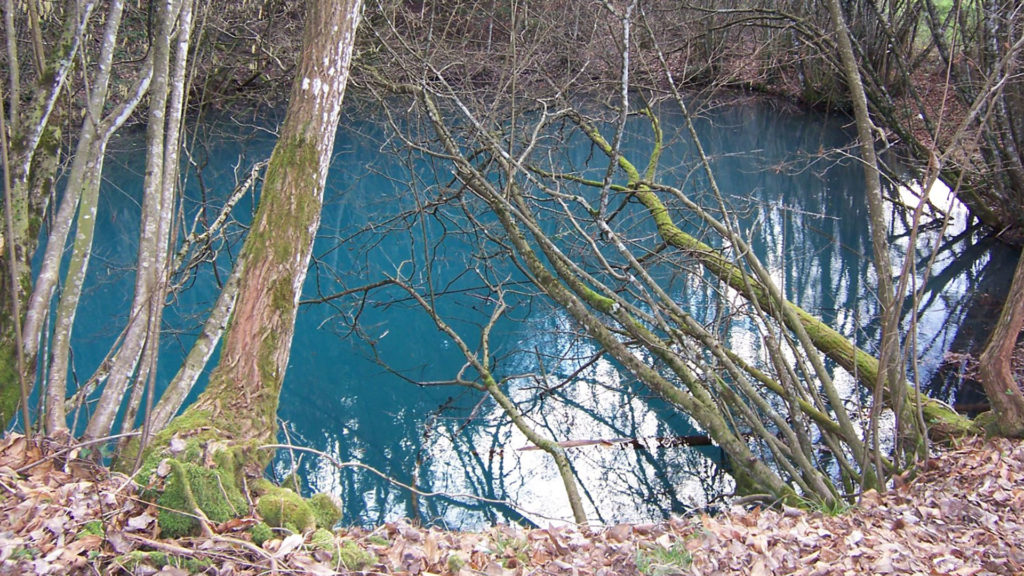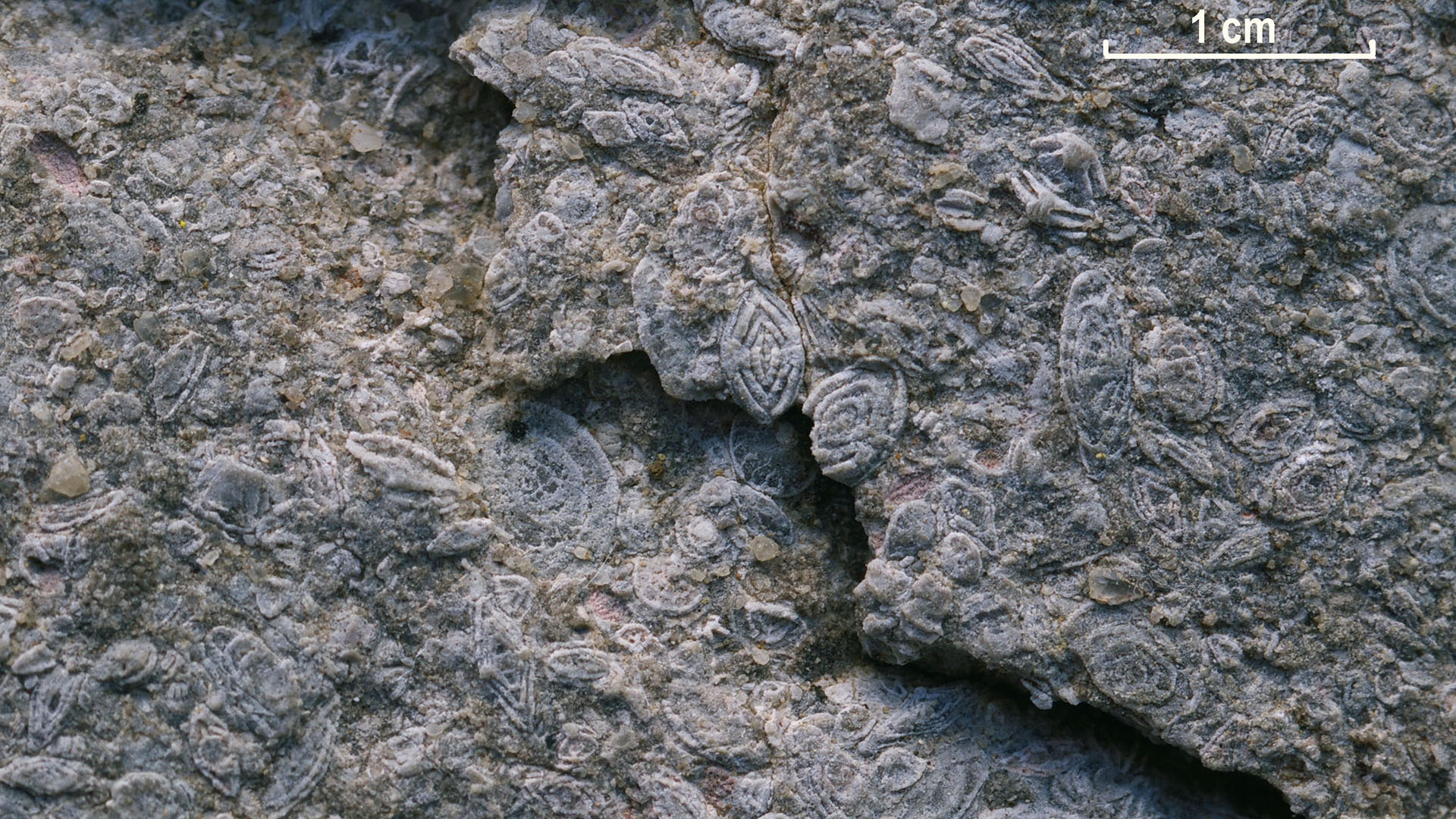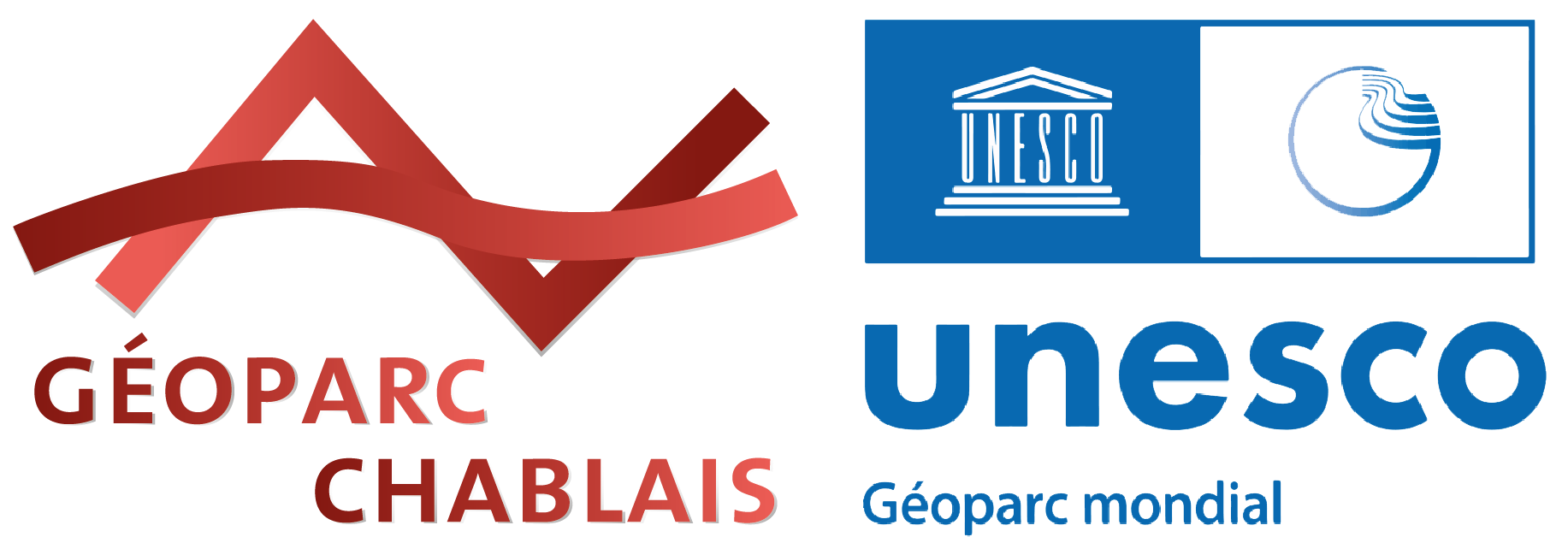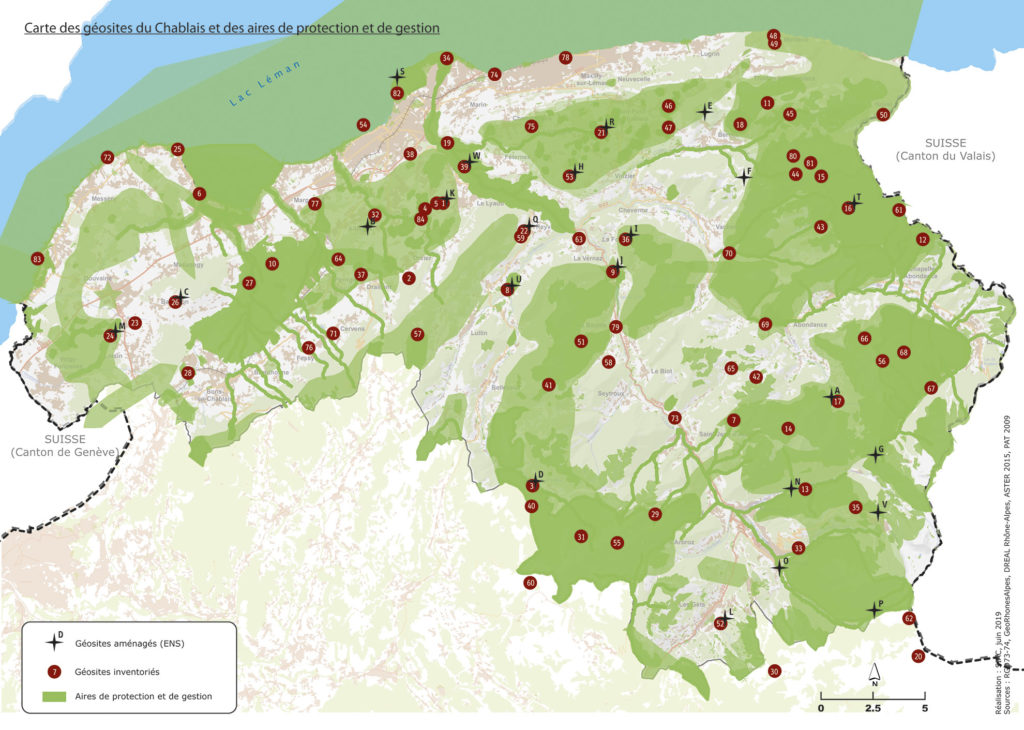The Chablais Geopark has identified sites featuring geological, geomorphological, and hydrogeological heritage of scientific, cultural, educational, or aesthetic value. These “geosites” are the pillars of the UNESCO Global Geopark designation.
The area’s geosites
To date, 85 geosites have been identified and documented. This inventory provides the public and local stakeholders with knowledge of the area and offers a tool for managing these sites. The inventory is constantly updated, though not all sites are documented to the same extent.
The Chablais geosites have been assessed according to the scientific method described below. The information is recorded in a detailed database, which includes data on the environmental and cultural aspects of each geosite. New sites are added to the inventory as they are identified.
The Auvergne-Rhône-Alpes Region’s Geological Heritage Inventory includes 13 of the Geopark’s geosites due to their rarity at the regional, national, or international level.

The geosite inventory assessment criteria
The inventory’s system of points is based on methods developed by J.P Pralong (2006), E. Reynard (Reynard, Fontana et al. 2007) and De Wever (Le Nechet et al. 2007). Values are assigned to criteria on a scale of 0 (lowest score) to 1 (highest score), in intervals of 0.25. The overall value is the average of the final geological score and the final score for other aspects of the site.
The criteria
Main Criteria
Geological / Paleogeographical value
The site is assessed for how well it reveals the area’s geological or geomorphological development. The highest scores designate sites that effectively record the geology or geomorphology of the area, or have made a historical contribution to the earth sciences, as well as sites mentioned frequently in the press or in theses and research projects.
Integrity and preservation
Each site’s state of preservation is examined according to its initial condition (natural environment, anthropogenic damage: changes to the landscape, vandalism, the impact of urban planning). Considerations for site protection are made, for example by active site management and through legal means.
Rarity and representativeness
The intrinsic value of each site is measured: geometry, size, composition, age, context, and dynamics. This measure reflects the number of similar sites in the region.
Educational value
A non-Earth Sciences assessment is conducted of the rocks, the landscape, and the underlying processes that have shaped the landscape. The highest scores are given to geological sites that have been developed through signposted trails, explanatory signs, display boards, guided tours and maps, and are good teaching sites..
Additional criteria
These complementary aspects are also taken into consideration:
Ecological value
- Diversity (number of species), value (rarity), dynamics (adaptability)
- Rarity and representativeness: the rarity of the species, their environment, and their level of preservation (current or planned)
Aesthetic value
- Different ways of appreciating the site — number of different views of the site
- How easily the site can be distinguished — level of contrast with the landscape
- The site’s presence in the landscape — its vertical development
Cultural value
- The site’s cultural value
- Cultural events held at the site
Access
This criterion refers to the quality of road access based on a topographic map with a 1:25,000 scale.
The geosites database can be consulted at the SIAC office by appointment with the Geopark’s coordinator.

Definition of geoheritage
The following aspects are considered geoheritage:
- Geological and geomorphological sites seen as important due to scientific quality, rarity, attractiveness, or educational or cultural value. Examples include the Pont du Diable Gorges, mountain lakes, and the glacial erratics that dot the Chablais’ landscape.
- Cultural, historical, and architectural sites that are relevant to the area’s geology or geography, such as the Ripaille estate or the Aulps Abbey discovery centre.
- Human heritage including traditions and living expressions inherited and passed on to our descendants including the local Chablais dialect, DOP Abondance Cheese, distinctive Lake Geneva boats with lateen sails and the transhumance of livestock.



